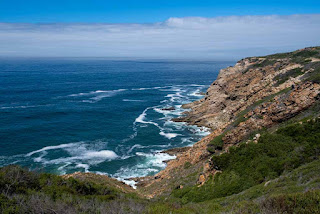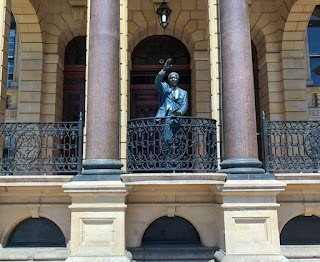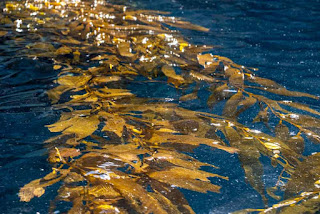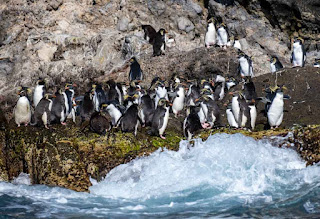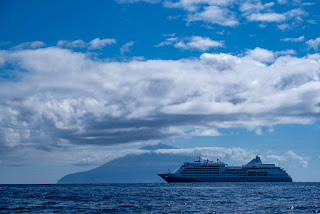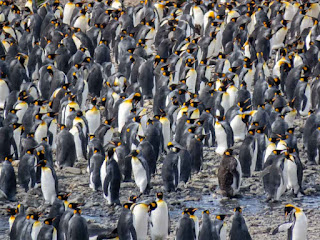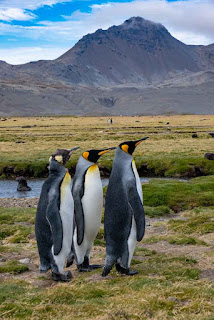Today’s tour from Port Elizabeth took us to the Addo Elephant Park – one of the best places in the world to see large groups of elephants close up. The park is home to roughly 600 of these magnificent beasts, and as you drive around the centre of the park, it can feel like they’re everywhere to be seen – big family groups at the lakes, gangs of adolescent males hanging around at the waterholes looking for trouble (teenagers are the same the world over), or herds strolling through the bush having a feed.
Addo’s landscapes aren’t particularly interesting or varied – undulating mainly treeless plains with low bushes, but that makes the elephant-spotting easier; plus, the guides know where all the popular water holes are, so you’re almost guaranteed to see some. I’d estimate that we saw at least 100 elephants, ranging from huge bull elephants confidently striding past our jeep (no more than 6 feet away), to gorgeous little babies that were gloriously uncoordinated as they stayed close to their mother’s feet. How the mothers didn’t step on the babies I’ll never know, but it was lovely to see just how tender and delicate these enormously powerful beasts could be.
What a fabulous tour!
PS. In stark contrast to the wonders of the natural world, the bits of central Port Elizabeth (now re-named the almost unpronounceable “Gqeberha”) that we drove through had an almost post-apocalyptic feel to them – so many Victorian buildings abandoned or boarded up, rubbish-strewn streets, groups of people just hanging around aimlessly. Quite depressing.














